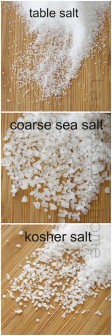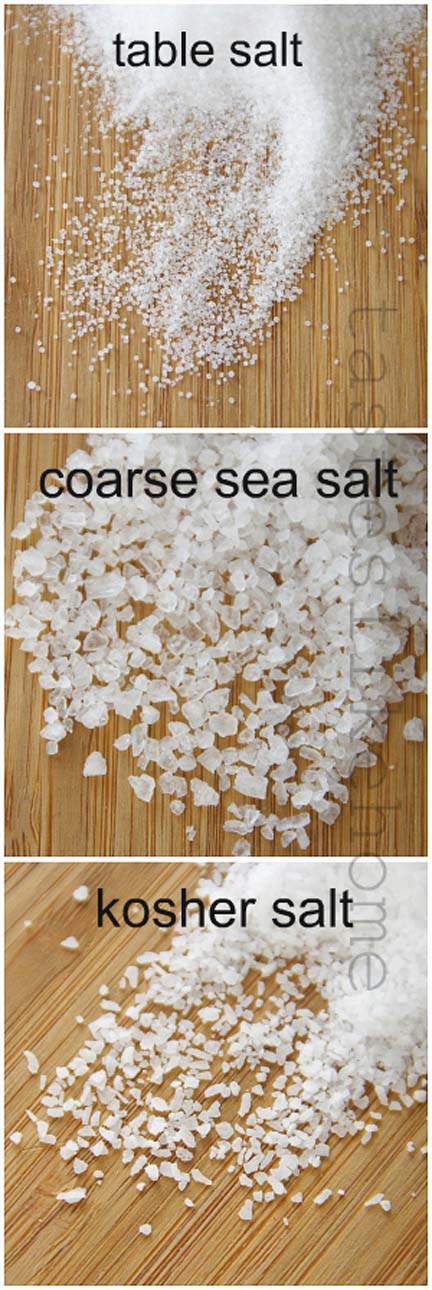Hi Everyone,
The salt war has come home.
Last week, Canadian Professor of Nephrology, Euan Carlisle, while responding to a question about the possible cause of the large number of renal failure cases in Guyana (at the opening of The Doobay Renal Centre), said that a contributing factor might be that our diets are loaded with too much sodium. Dr Carlisle hastened to add that he had not been in Guyana for a long period of time and had not carried out any formal research. He also added that sodium is not the only prime cause of renal failure.
Two days later, Demerara Waves, Caribbean News Now and other Caribbean online publications that attract a wide cross section of readers in and outside of the Caribbean carried a story headlined – ‘Reduce salt intake says Bajan Chef’. In the story, Bajan chef, Derek Went said, “I’m all for maintaining the diverse culinary traditions of the Caribbean, but let’s make sure we do so without compromising good health.” Bravo I say! But then Chef Went proposed that we make a switch from table salt to moderate amounts of sea salt as a healthier alternative. This is where there was the loud screeching of brakes in my head; rubber burned and I almost crashed.
 After reading these stories I did not want people to go off, half-cocked, as we say, and suddenly start buying sea salt to use instead of table salt thinking that it would automatically solve their sodium-intake problems because it is supposedly healthier. It is not. The purpose of today’s column is not to admonish you about your sodium intake or to remind you that most of the salt we consume is in processed foods and food that has been cooked outside of the home. Rather, I want to address the issue of sea salt versus table salt and the health claims made that sea salt is better than table salt. The claim that it will reduce your sodium intake is simply not true. Many well-established and reputable health professionals and health publications have described the health claims as a con.
After reading these stories I did not want people to go off, half-cocked, as we say, and suddenly start buying sea salt to use instead of table salt thinking that it would automatically solve their sodium-intake problems because it is supposedly healthier. It is not. The purpose of today’s column is not to admonish you about your sodium intake or to remind you that most of the salt we consume is in processed foods and food that has been cooked outside of the home. Rather, I want to address the issue of sea salt versus table salt and the health claims made that sea salt is better than table salt. The claim that it will reduce your sodium intake is simply not true. Many well-established and reputable health professionals and health publications have described the health claims as a con.
What is Sodium?
Sodium is a mineral; it is a component of salt – all types of salt. However, sodium is not only in salt, it occurs naturally in most foods. Within our bodies, sodium is found in the fluid surrounding the cells. It is necessary to regulate blood pressure and fluid volume. Our muscles and nervous system need sodium to function properly.
Too much sodium (in this case, salt) is the element that is linked to hypertension.
What is Table Salt?
Table salt is salt that has been mined from underground salt deposits, and it includes a small portion of calcium silicate, an anti-caking agent added to prevent clumping. This salt is processed into very fine crystals. There is no evidence that this processing makes it worse for us. You will notice that when you buy table salt, the package may say Iodized salt, what this means is that the salt contains iodine, a necessary nutrient to prevent goitre (a thyroid disorder caused by its deficiency).
What is Sea salt?
Sea salt is harvested from evaporated seawater and receives little or no processing, leaving intact the minerals from the water it came from. These minerals flavour and colour the salt slightly. It is the minimal processing and minor mineral flavours that lead people to think that sea salt is better than table salt but the truth is that the trace elements are in such scant amounts that the nutritional value is negligible.
Here is the kicker. Table salt and sea salt both contain the same amount of sodium chloride by weight, which means they both contribute equally to total sodium consumption and have the same effect on blood pressure!
Table salt versus Sea Salt
The main differences between table salt and sea salt are in their taste and texture.
Sea salt is being marketed as a health food, added to soups, potato chips and a wide variety of packaged snacks labelled as “low sodium,” “all natural” and “healthy.” In reality there is no difference chemically. The real differences are in how the two are used in cooking.
Sea salt is often coarse in texture with larger crystals or flakes; it’s a coarser grain of salt. A pitfall to lookout for when using sea salt is that there would be a tendency to use more because the coarse-ground salt or flakes, don’t taste as salty on the tongue as the finer-grained table salt, this is due to a lower surface area. In other words the finer grain makes immediate and direct contact on the tongue, the coarse salt only makes contact on a small part depending on its shape. What this means is that you might need more salt to get the same “hit” or “taste” as when using table salt. This taste factor is borne out when it comes to cooking. For example, if a recipe calls for one teaspoon of table salt, we cannot assume that one teaspoon of sea salt will result in the same flavour. Why? Because while the volume (1 teaspoon) may be the same, the weight is not and the salinity may not be the same either.
Table salt is meant to be used as a cooking salt. Sea salt is what is known as a finisher. By finisher I mean that sea salt is meant to be added when the dish is finished cooking to add crunch, texture, taste and visual appeal. In some cases it is like an edible garnish. The fancier and more expensive sea salts are rarely used for cooking. They are finishing salts. It is worth noting that sea salt loses its unique flavour when cook or dissolved.
Switch from table salt to sea salt?
If you like. I use both. As I said earlier, table salt has iodine to help combat iodine deficiency so iodine is certainly important, but if you eat seafood regularly you might not have to worry too much. In either case, you should not over use salt out of fear of hypothyroidism, if you do, you will simply drive headlong into hypertension.
Here is another problem in recommending Caribbean people switch to sea salt – sea salt is expensive (ironic, huh? Seeing as most of the Caribbean is surrounded by sea). Of course there are some sea salts that are more expensive than others. The other thing is that sea salt is not readily available in all markets throughout the Caribbean. I personally feel that when recommendations or calls are made for switches and swap outs that are meant to provide benefit, then it must benefit everyone and not just a select few with the means to access it. Availability and cost must be addressed on a national and regional level so that each household can have ready access to the product or products being recommended; particularly with a commodity such as salt, which is something we use everyday.
A final word: kosher salt?
Maybe some of you may be wondering about kosher salt. Kosher salt can come from seawater or underground sources. Kosher salt contains no preservatives but like table salt and sea salt, kosher salt also contains sodium chloride. Depending on the brand, some may have in an anti-caking agent to avoid clumps. The two larger brand producers of kosher salt each use a different method to process the salt to give it a signature look. The most common is the Morton Kosher salt – a coarse salt of flat crystals. The other brand, Diamond, has crystals that are formed into coarse tiny pyramids with jagged edges.
The salt gets its name “kosher” not from being made in accordance with the guidelines for kosher foods as written in the Torah (Judaism’s founding legal and ethical religious texts). Rather, it is due to its use in making meat kosher.
The bottom line is this – the most harmful chemical in table salt is the same as in sea salt: sodium chloride. While it is generally true that unprocessed foods are much better for you, it is not so in this case. Sea salt in its raw state still raises your blood pressure. What we all have to do is to make a conscious decision to be judicious about our salt intake.
I think that two of the best ways to do this are to cut down on processed foods, avoid the salt shaker when eating out and oh so gently reduce the amount of salt we add to our food when cooking. Don’t lose the flavour – you know I would never advocate that we sacrifice flavour (and of course, a part of flavour is taste). Which one of us would voluntarily live in a world of flat, bland tasting food? I shudder at the thought of my food not being properly seasoned with salt. What I am saying is that we should pay more attention to flavour. Sometimes we can build up more and more of a liking for salt. The more salt we get used to adding to our food, the more salt we keep wanting. You then have to ask yourself, do I taste the food or the salt? Salt must enhance flavour, not overpower it.
Cynthia










